DIY Kitchen Faucet Replacement Shown in 9 Steps
“DIY kitchen faucet replacement” is part three of the Budget-friendly Kitchen Makeover series.
In case you’ve missed parts one and two:
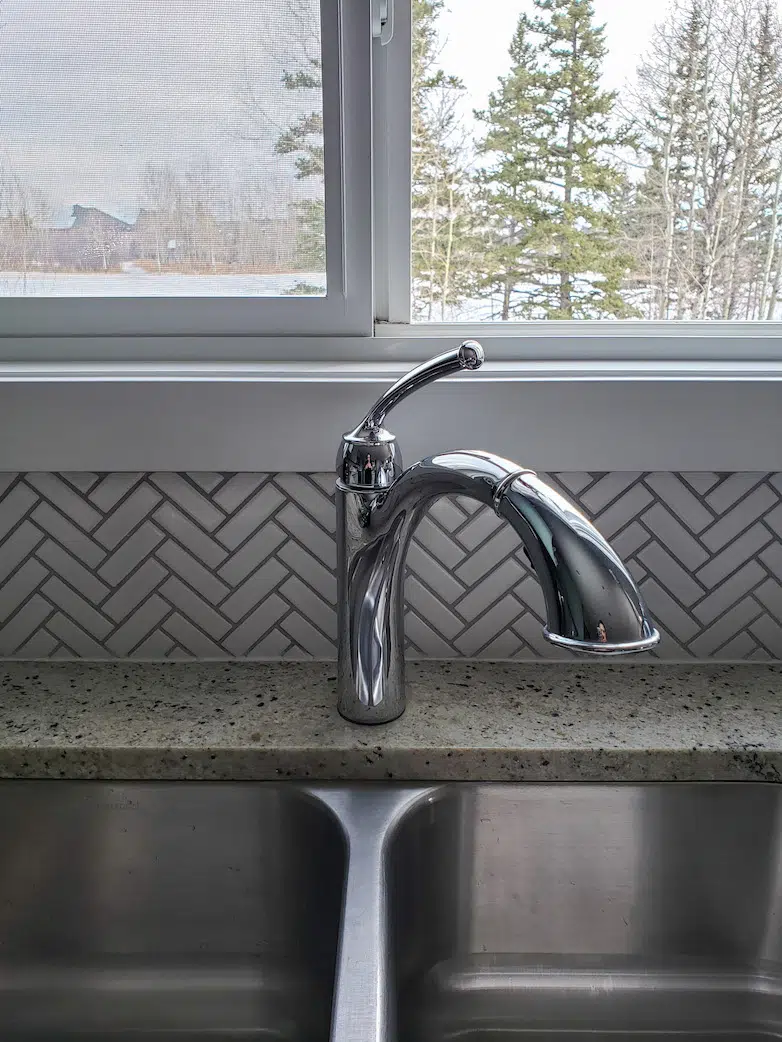
This is the faucet that has been in our kitchen since we moved in. I’m guessing that it was installed when the house was built about 12 years ago. As you can imagine, I wasn’t a fan. It was working just fine for most of the first three years. It just wasn’t aesthetically pleasing to me. No offense if this is your number one favorite; I am all for not having the same taste in decor and design!
As I chose the beautiful champagne bronze hardware for the cabinets, I imagined how gorgeous a matching faucet would look. As luck would have it, the old faucet started leaking shortly after I started painting the cabinets. I promise I had no hand in that!
Searching For the Perfect (but Affordable) Faucet
As usual, I searched for something super budget-friendly that looks like a million bucks. Almost all the affordable kitchen faucets in a champagne bronze finish are really modern. I’m changing everything to classic and traditional in my current decorating phase. A modern fixture just would not do!
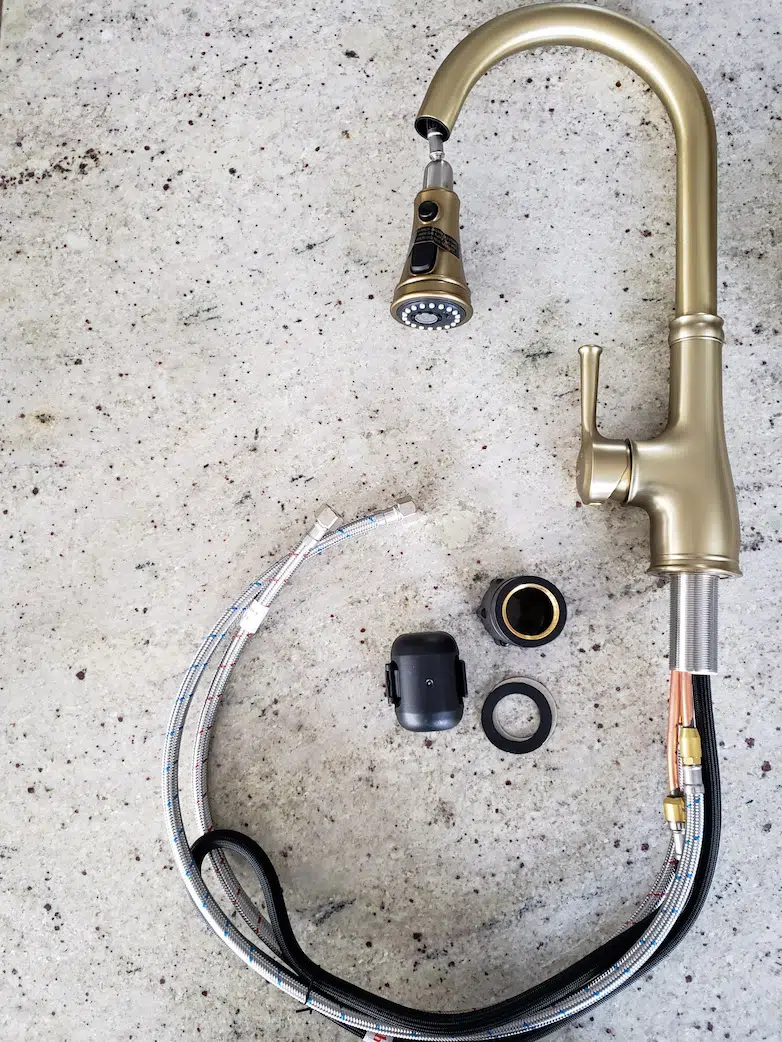
I did not give up until I found THE ONE!
This kitchen faucet ticks all the boxes. It is budget-friendly, has a champagne bronze finish, and thirdly, has a more traditional design.
Using your imagination, you can even see similarities in the faucet and the cabinet hardware designs! The only negative is the unfamiliar brand name. The brand is WEWE, which I have never heard of before. I could, however, get a similar-looking one from a famous brand for seven times the price! (That is a big nope from my side.)
Sometimes, you need to give the new guy a chance. You might even be pleasantly surprised. So, I gave WEWE a try.
FAQ: Can I Replace a Kitchen Faucet Myself?
As far as plumbing projects go, replacing a faucet is one of the easier projects. If you are a frequent DIYer, by all means, go for it! I think my very first attempt at plumbing was replacing a bathroom faucet.
Disclaimer: I’m not suggesting that everyone should or could do all the plumbing in their home! You know how handy you are and what your limitations are (hopefully). If in doubt, call a professional.
Why am I sharing this, then? To show you step by step how a DIY kitchen faucet replacement looks. You might be inspired or terrified or both, just like me! Yes, I am always doing it scared.
If you follow all my rookie steps, there isn’t much that can go wrong.
You can even do it without my help since the faucet comes with very clear instructions. I’m simply adding my own tips and tricks.
If you are still unsure, consider this:
- Best case scenario: you save about $300 in labor costs.
- Worst case scenario: you phone a plumber anyway!
Let’s Replace a Kitchen Faucet!
Step 1
This might be my best tip for you (if you don’t do this often): take a photo of the current situation before you begin! You will thank yourself when you are unsure of what goes where.
Do not rely on your memory. If anything, having a reference will ease your anxiety.

This is the before photo of the water supply lines, which are very straightforward.
Step 2
If the water supply lines have stop valves like the ones in the photo above, you can shut off the water supply to the faucet without shutting off the main water supply to the whole house.
Step 3
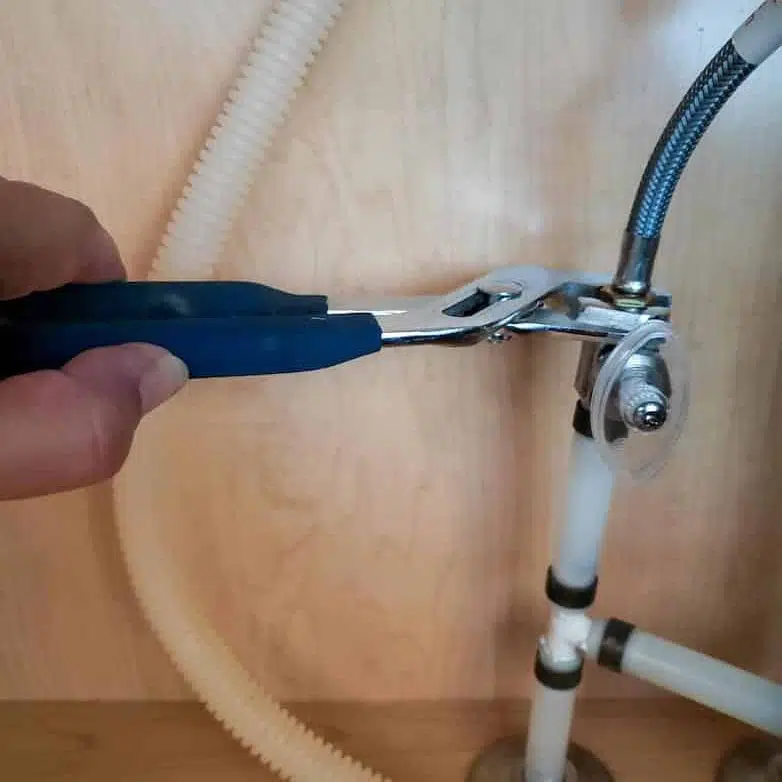
With the stop valves closed, you can use an adjustable wrench to disconnect the old faucet’s connections to the water supply. Be sure to open the faucet (hot and cold side) to empty the bit of water that was already in the pipes before disconnecting.
You might also need a second wrench, or even just your hand, to keep the supply line from twisting with the piece you are loosening.
Step 4

This photo shows where the supply line to the pullout sprayer clips in. Also, how the faucet is secured or mounted to the countertop. Loosening that mounting nut made me sweat! I did not have the right tool for this tight space.
Ideally, it would help if you have a basin wrench, which I don’t. I managed to loosen the nut with an adjustable wrench, but it was a mission.
You should now be able to pull out the old faucet with all its connections through the hole in the countertop.
Step 5

Gather all the pipes of your new faucet and push it through the countertop. Time to fasten the mounting nut in that dreaded tight space underneath the countertop, behind the sink.
But wait, what do we have here?
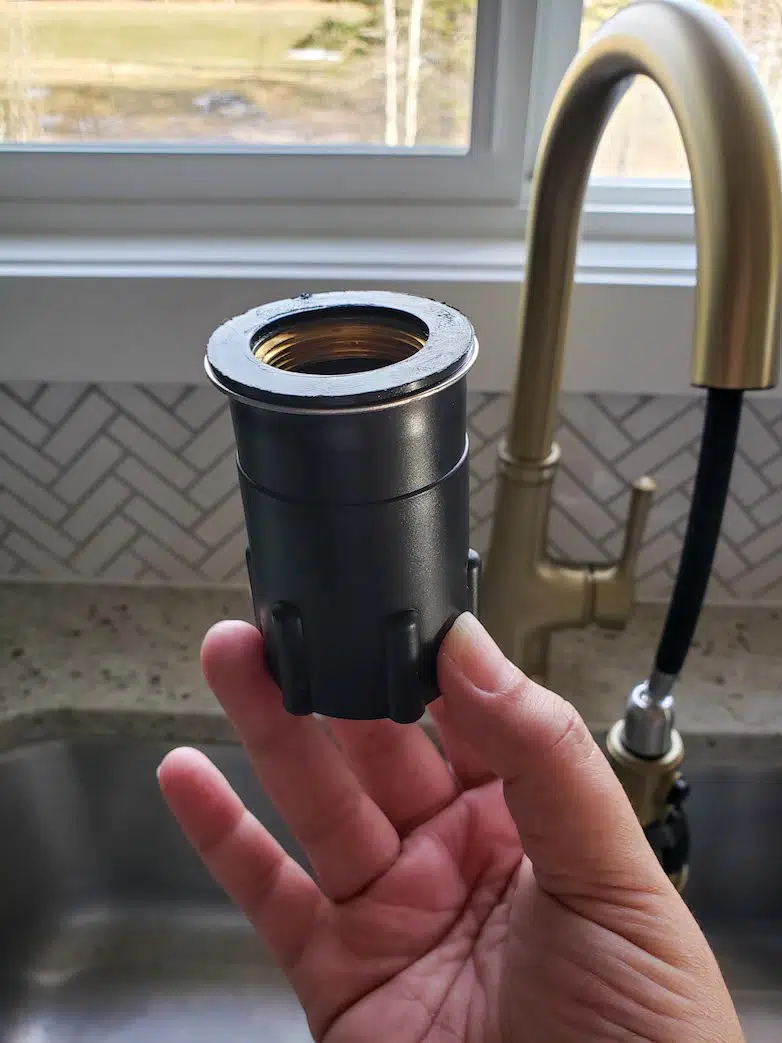
The new faucet has something WAY better! The mounting nut is built into a plastic attachment designed to enable you to tighten the nut ALL the way by hand! How brilliant is that??
Step 6
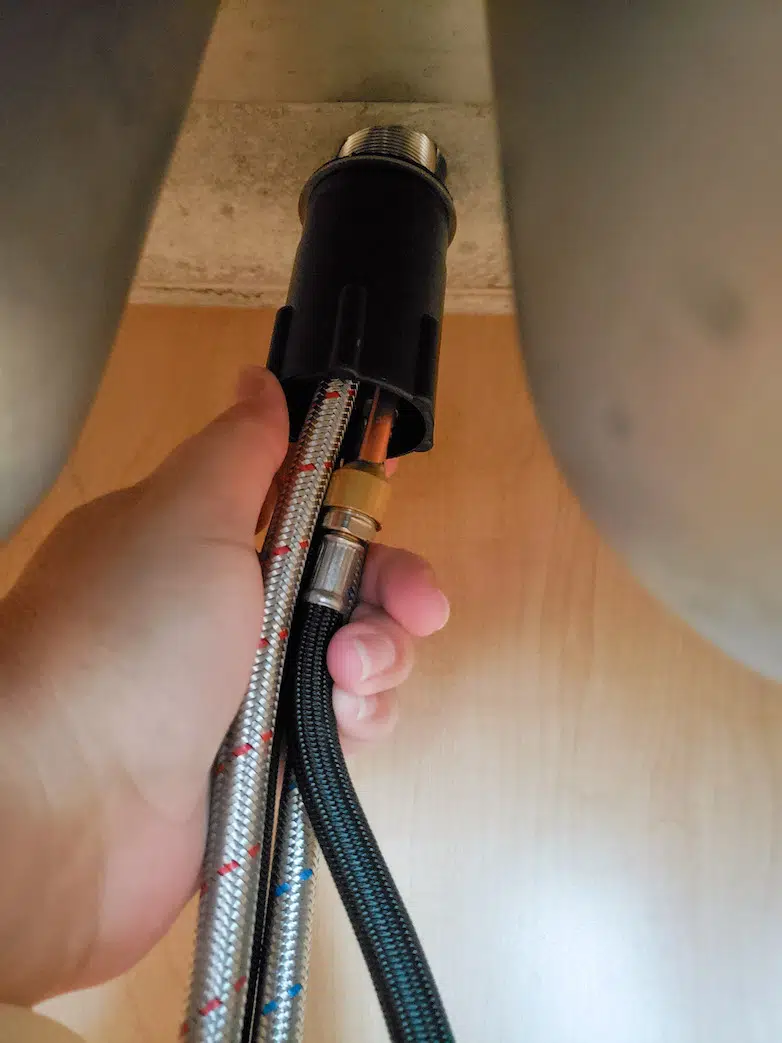
From underneath the sink, push all the same pipes through the mounting nut (with its attachment) that keeps the faucet secured to the countertop.
Lightly pull the pipes downwards to keep the faucet in place while you tighten the nut. This could not be easier with this clever design!
Step 7

Before connecting the water supply, I always like to take extra precautions against small leaks. Wrapping a bit of plumber’s tape around the screw threads will ensure a water-tight connection, making it impossible for droplets to seep through.

Begin tightening by hand as far as possible, using the adjustable wrench for the last possible turns. Make sure the connections are as tight as possible without using brute force.
Step 8
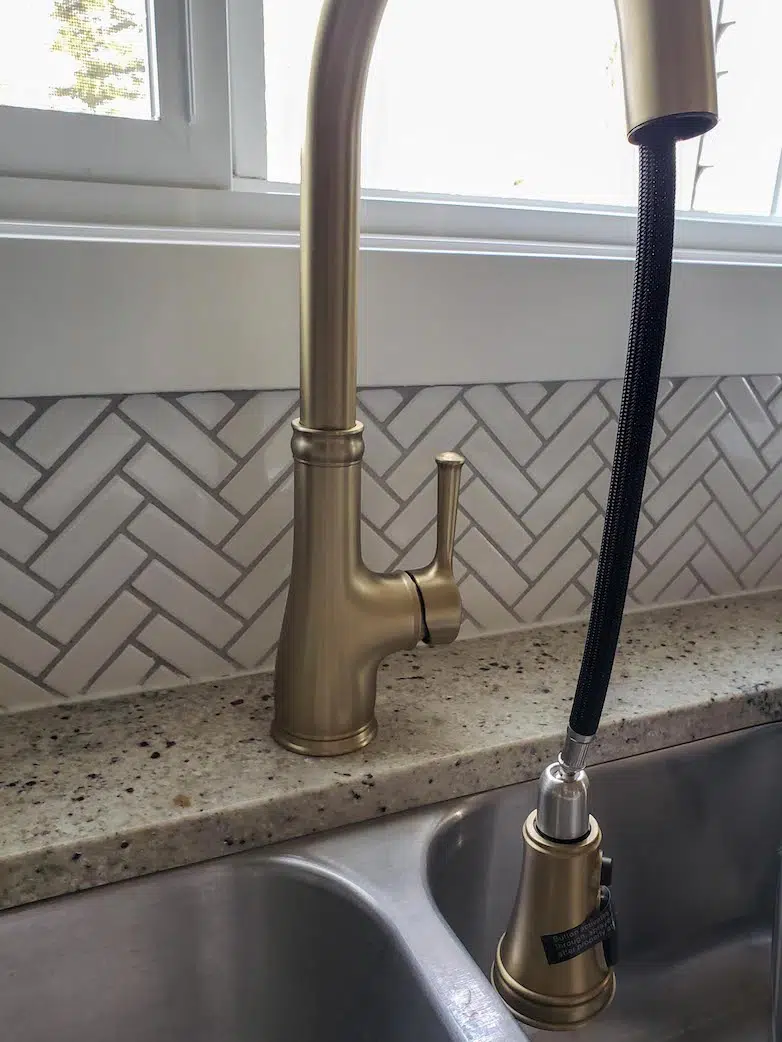
By now, the faucet should sit securely in place, but the spray attachment will hang limp with nothing pulling it back. Do not fear!
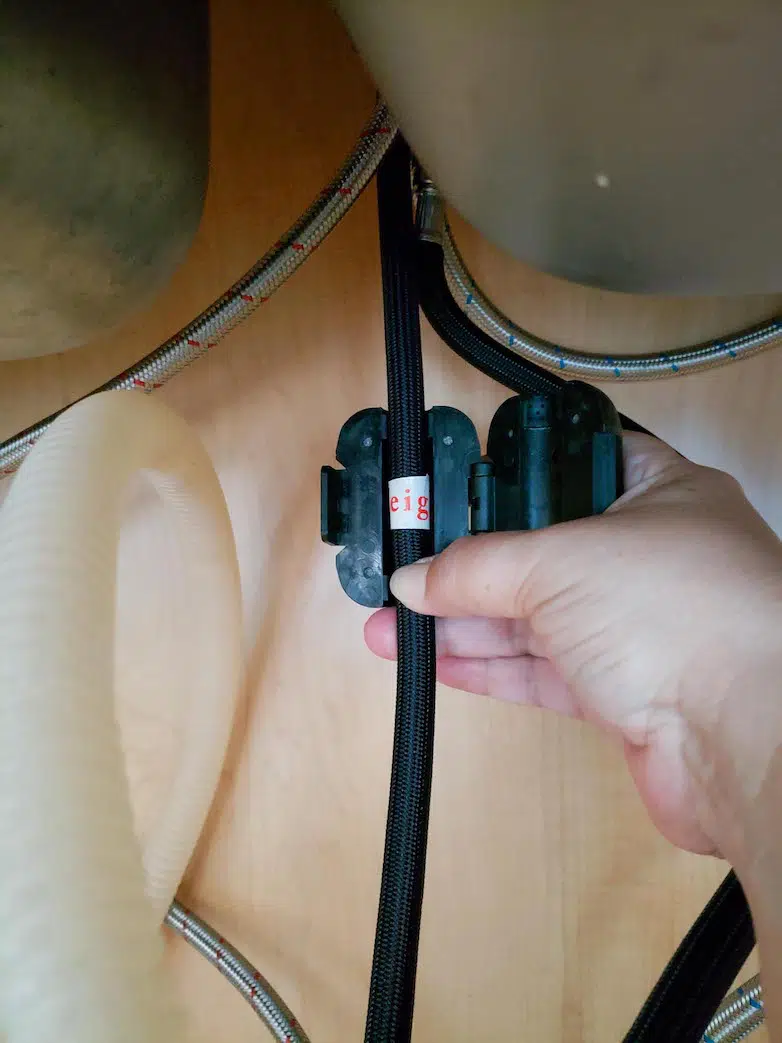
All you need to do is clip on a weight to the bottom of the spray line. There is even a mark on the supply line, exactly where you should put the weight.
The spray head should now be pulled back into place. It couldn’t be any easier!
Step 9
This is my own added step or trick. By following this step, I know that I did everything correctly, and there won’t be any surprise puddles in the cabinet later caused by a slow leak.
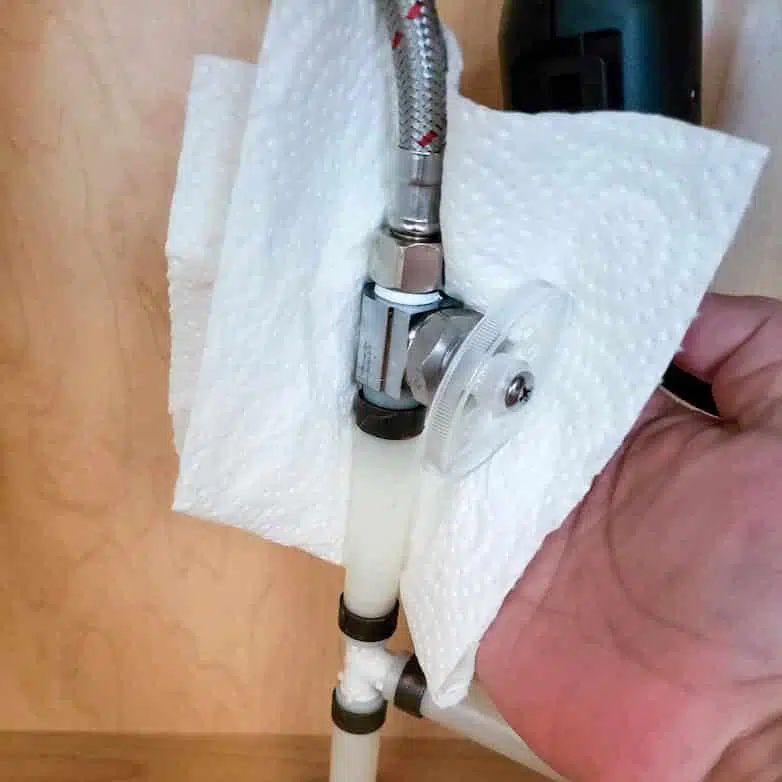
Before you open the water supply, use a paper towel to wipe all the connections to make sure it is perfectly dry.
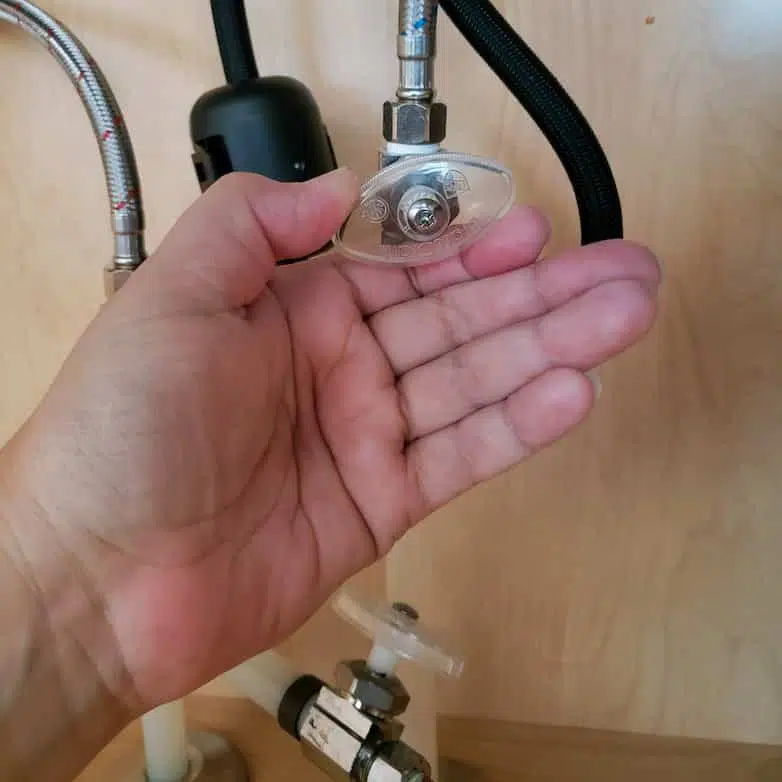
Turn the water supply on very slowly. If you see any water seeping out, turn it back off again. The solution is usually more plumber’s tape around the threads. Repeat step 7.
If you see no water at all, you did a good job! Wait a few minutes, and with a dry paper towel, wipe all connections again. Inspect the paper towel for any dampness. If you see nothing, you will have total peace of mind and can pat yourself on the back! You passed plumbing 101!
After Your DIY Kitchen Faucet Replacement
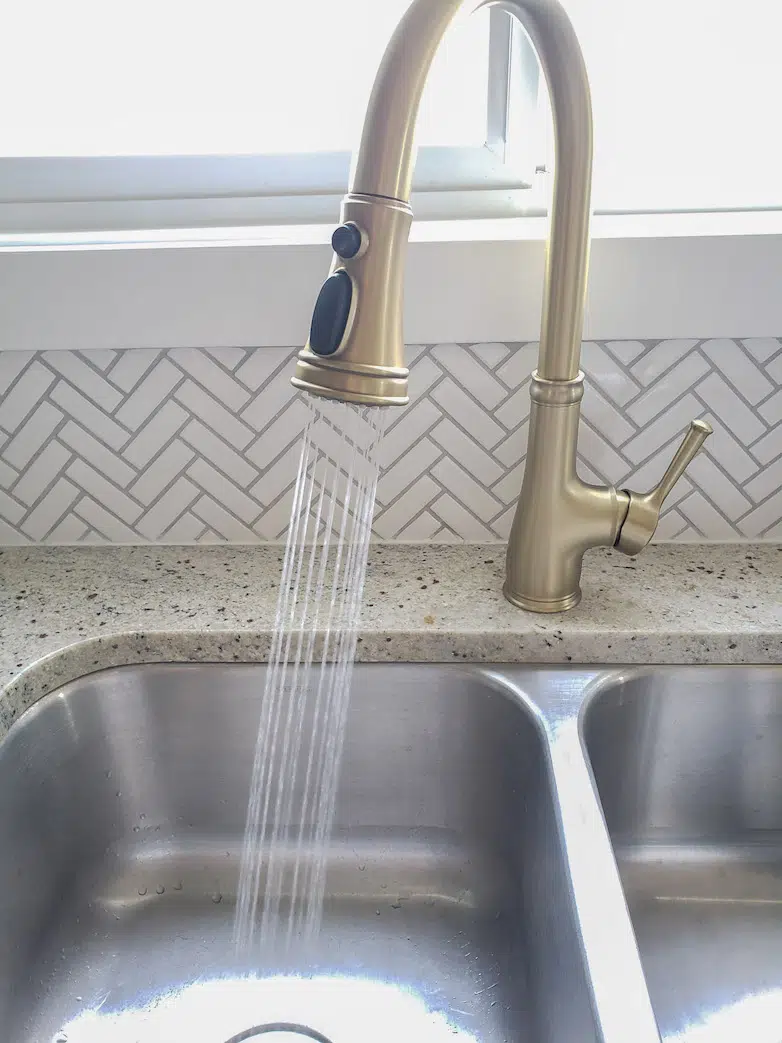
I am not going to lie, I was worried that after doing all the plumbing perfectly, what if the faucet wasn’t performing as expected?
There was no reason to worry at all! It is working perfectly with good, strong water pressure.
Would I Recommend This Faucet?

100% yes! I love how it looks, and I’m pleased with how it’s working.
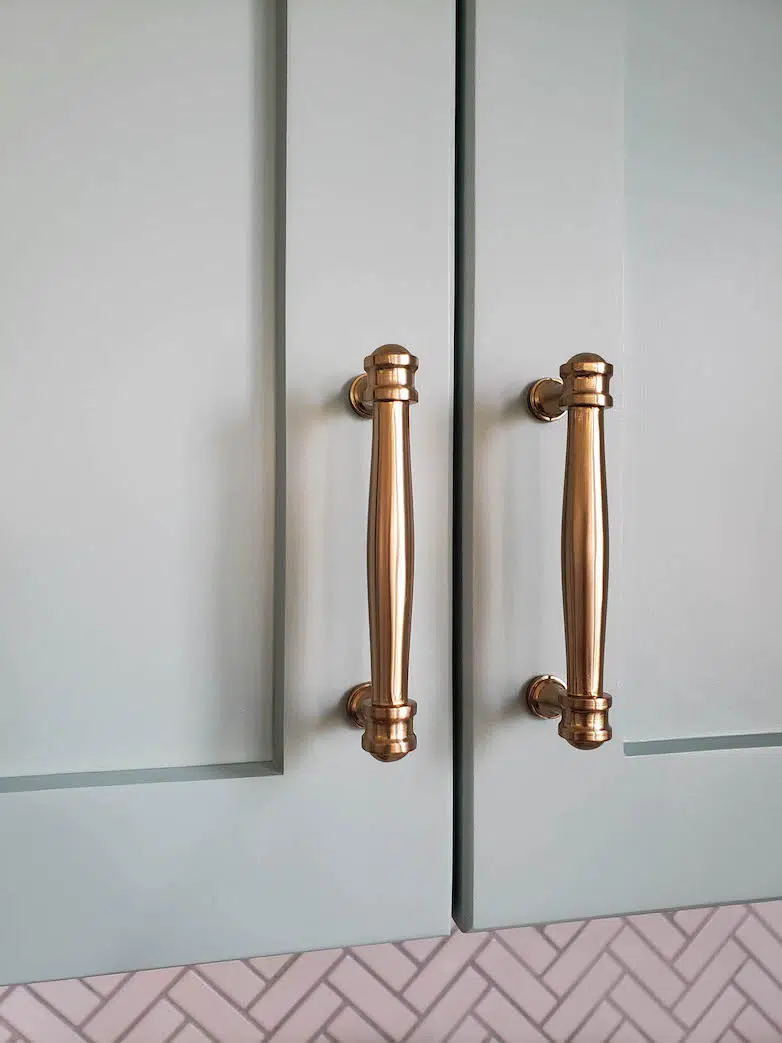
Do you agree that it goes perfectly with the cabinet hardware?
The kitchen’s budget-friendly makeover is making good progress. Stay tuned for more updates coming soon!

You May Also Like:
12 Things your plumber wishes you knew
My powder room makeover, where I also replaced a faucet and vanity
The basement bathroom where I did ALL the plumbing
